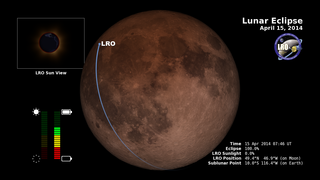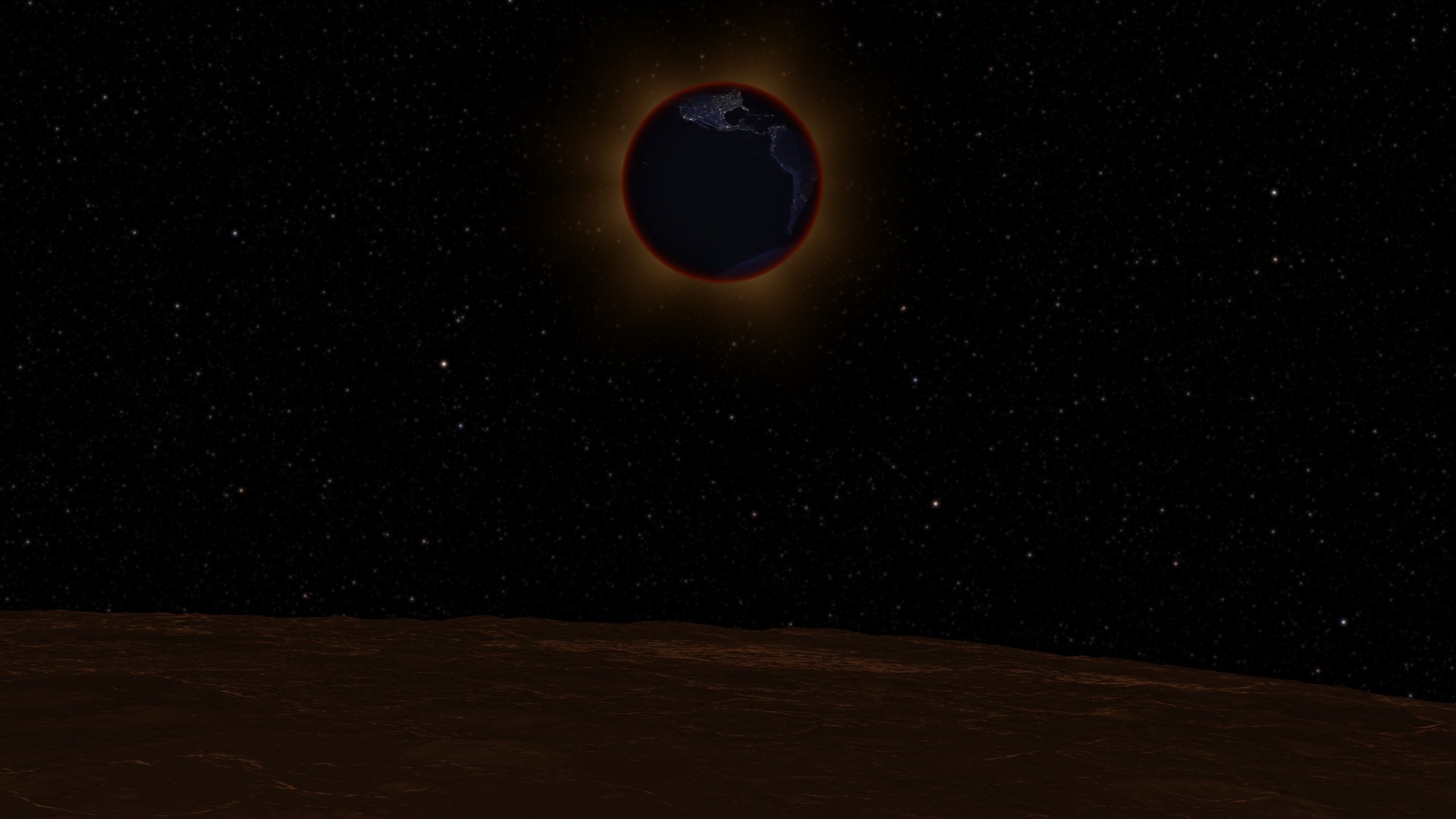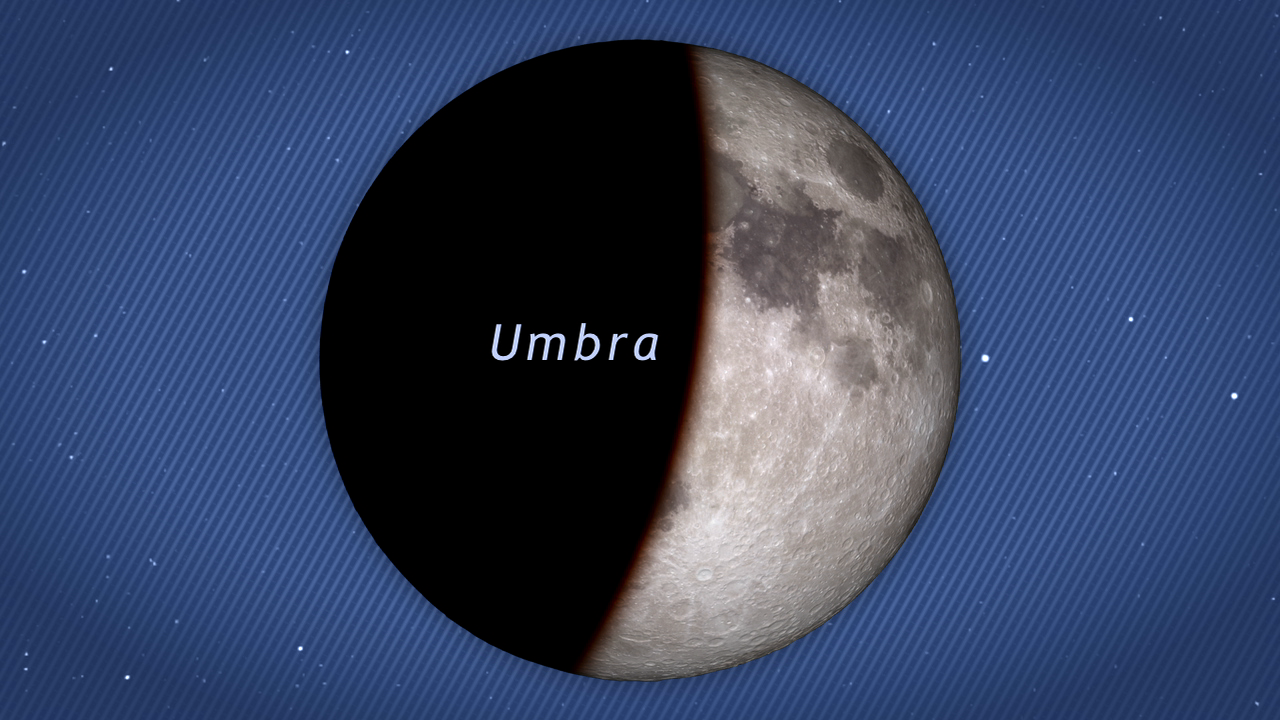LRO and the Lunar Eclipse of April 15, 2014: Shadow View
In the early morning hours of April 15, 2014, the Moon enters the Earth’s shadow, creating a total lunar eclipse, the first of four that are visible in the Western Hemisphere in the next two years. This animation shows the changing appearance of the Moon as it travels into and out of the Earth’s shadow, along with the times at various stages. Versions of the animation have been created for each of the four time zones of the contiguous United States.
All of North and South America will see this eclipse, and you won’t need special equipment to see it. Just stay up late, go outside and look up!
The penumbra is the part of the Earth’s shadow where the Sun is only partially covered by the Earth. The umbra is where the Sun is completely hidden.
The animation includes the position of the Lunar Reconnaissance Orbiter spacecraft. LRO is powered by sunlight, but during the eclipse, it will have to rely on its battery for almost three hours.
Universal Time (UT). The Moon moves right to left, passing through the penumbra and umbra, leaving in its wake an eclipse diagram with the times at various stages of the eclipse. Includes LRO's orbital motion.
Eastern Daylight Time (EDT). The Moon moves right to left, passing through the penumbra and umbra, leaving in its wake an eclipse diagram with the times at various stages of the eclipse. Includes LRO's orbit.
Central Daylight Time (CDT). The Moon moves right to left, passing through the penumbra and umbra, leaving in its wake an eclipse diagram with the times at various stages of the eclipse. Includes LRO's orbit.
Mountain Daylight Time (MDT). The Moon moves right to left, passing through the penumbra and umbra, leaving in its wake an eclipse diagram with the times at various stages of the eclipse. Includes LRO's orbit.
Pacific Daylight Time (PDT). The Moon moves right to left, passing through the penumbra and umbra, leaving in its wake an eclipse diagram with the times at various stages of the eclipse. Includes LRO's orbit.
The Moon moves right to left, passing through the penumbra and umbra, leaving in its wake an eclipse diagram. Dates, times, and LRO's orbit are omitted.
The Moon moves right to left, passing through the penumbra and umbra. Shows LRO's orbit. Frames include an alpha channel.
The Moon moves right to left, passing through the penumbra and umbra. LRO's orbit is omitted. Frames include an alpha channel.
The star field that appears behind the Moon during totality. The Moon is in Virgo. Because of the narrow field of view, no easily recognized stars are visible here; Spica is just out of frame toward the lower right.
For More Information
Credits
Please give credit for this item to:
NASA's Scientific Visualization Studio
-
Animator
-
Ernie Wright
(USRA)
-
Ernie Wright
(USRA)
-
Producers
- Dan Gallagher (USRA)
- David Ladd (USRA)
- Michelle Handleman (USRA)
-
Scientists
- John Keller (NASA/GSFC)
- Noah Petro (NASA/GSFC)
- Michelle Thaller (NASA/GSFC)
-
Project support
- Laurence Schuler (ADNET Systems, Inc.)
- Ian Jones (ADNET Systems, Inc.)
Missions
This page is related to the following missions:Series
This page can be found in the following series:Datasets used
-
DEM (Digital Elevation Map) [LRO: LOLA]
ID: 653 -
DE421 (JPL DE421)
ID: 752Planetary ephemerides
This dataset can be found at: http://ssd.jpl.nasa.gov/?ephemerides#planets
See all pages that use this dataset -
WAC 643nm High Sun Global Mosaic [LRO: LROC]
ID: 803
Note: While we identify the data sets used on this page, we do not store any further details, nor the data sets themselves on our site.
Release date
This page was originally published on Monday, April 7, 2014.
This page was last updated on Wednesday, May 3, 2023 at 1:51 PM EDT.




